#postquantumcryptography
Explore tagged Tumblr posts
Text
Craig Gidney Quantum Leap: Reduced Qubits And More Reliable

A Google researcher reduces the quantum resources needed to hack RSA-2048.
Google Quantum AI researcher Craig Gidney discovered a way to factor 2048-bit RSA numbers, a key component of modern digital security, with far less quantum computer power. His latest research shows that fewer than one million noisy qubits could finish such a task in less than a week, compared to the former estimate of 20 million.
The Quantum Factoring Revolution by Craig Gidney
In 2019, Gidney and Martin Ekerå found that factoring a 2048-bit RSA integer would require a quantum computer with 20 million noisy qubits running for eight hours. The new method allows a runtime of less than a week and reduces qubit demand by 95%. This development is due to several major innovations:
To simplify modular arithmetic and reduce computing, approximate residue arithmetic uses Chevignard, Fouque, and Schrottenloher (2024) techniques.
Yoked Surface Codes: Gidney's 2023 research with Newman, Brooks, and Jones found that holding idle logical qubits maximises qubit utilisation.
Based on Craig Gidney, Shutty, and Jones (2024), this method minimises the resources needed for magic state distillation, a vital stage in quantum calculations.
These advancements improve Gidney's algorithm's efficiency without sacrificing accuracy, reducing Toffoli gate count by almost 100 times.
Cybersecurity Effects
Secure communications including private government conversations and internet banking use RSA-2048 encryption. The fact that quantum-resistant cryptography can be compromised with fewer quantum resources makes switching to such systems more essential.
There are no working quantum computers that can do this technique, but research predicts they may come soon. This possibility highlights the need for proactive cybersecurity infrastructure.
Expert Opinions
Quantum computing experts regard Craig Gidney's contribution as a turning point. We offer a method for factoring RSA-2048 with adjustable quantum resources to bridge theory and practice.
Experts advise not panicking immediately. Quantum technology is insufficient for such complex tasks, and engineering challenges remain. The report reminds cryptographers to speed up quantum-secure method development and adoption.
Improved Fault Tolerance
Craig Gidney's technique is innovative in its tolerance for faults and noise. This new approach can function with more realistic noise levels, unlike earlier models that required extremely low error rates, which quantum technology often cannot provide. This brings theoretical needs closer to what quantum processors could really achieve soon.
More Circuit Width and Depth
Gidney optimised quantum circuit width (qubits used simultaneously) and depth (quantum algorithm steps). The method balances hardware complexity and computing time, improving its scalability for future implementation.
Timeline for Security Transition
This discovery accelerates the inevitable transition to post-quantum cryptography (PQC) but does not threaten present encryption. Quantum computer-resistant PQC standards must be adopted by governments and organisations immediately.
Global Quantum Domination Competition
This development highlights the global quantum technological competition. The US, China, and EU, who invest heavily in quantum R&D, are under increased pressure to keep up with computing and cryptographic security.
In conclusion
Craig Gidney's invention challenges RSA-2048 encryption theory, advancing quantum computing. This study affects the cryptographic security landscape as the quantum era approaches and emphasises the need for quantum-resistant solutions immediately.
#CraigGidney#Cybersecurity#qubits#quantumsecurealgorithms#cryptographicsecurity#postquantumcryptography#technology#technews#technologynews#news#govindhtech
2 notes
·
View notes
Text
youtube
Quantum Computing vs. Crypto: Is Your Digital Wallet at Risk?
Imagine waking up to news that your Bitcoin wallet could be emptied in seconds. This isn't science fiction; it's the very real and looming threat of quantum computing colliding with blockchain technology. In this essential episode from Tech AI Vision, we dive deep into the critical question: Can crypto truly survive the quantum threat?
We explore how powerful quantum computers, with their qubits, superposition, and entanglement, are rapidly advancing to compromise the complex cryptographic codes that protect your Bitcoin, Ethereum, and other digital assets. You'll learn about key algorithms like Shor's, which targets public key encryption, and Grover's, which affects hash functions – both vital to blockchain security.
Discover the unsettling "Harvest Now, Decrypt Later" threat and what it means for your investments today. We'll also cover the crucial developments in post-quantum cryptography and what proactive steps every crypto owner, investor, and developer needs to take right now to protect their digital future. Quantum computing and cryptocurrency are no longer just future concepts; they are current realities. Don't miss this definitive guide to understanding and preparing for the quantum computing crypto crash. Stay updated, stay safe, and help build a stronger future for blockchain in this new era.
#QuantumComputing#CryptoSecurity#Blockchain#Cybersecurity#Bitcoin#Ethereum#QuantumThreat#PostQuantumCryptography#DigitalAssets#TechAIVision#CryptoNews#FutureOfFinance#Youtube
1 note
·
View note
Text
Quantum Computing Revolution: Why It Changes Everything #shorts
youtube
With quantum computing growing at an alarming rate, the underpinnings of current-day blockchain security are under an unprecedented threat. In this revealing episode from Tech AI Vision, we delve into the critical question: Can crypto survive quantum computing? Learn how quantum computers, fueled by qubits, superposition, and entanglement, threaten to compromise cryptographic algorithms defending Bitcoin, Ethereum, and other cryptocurrencies. From Shor's algorithm breaking public key encryption to Grover's breaking hash functions, the implications are enormous. Discover the "Harvest Now, Decrypt Later" threat, post-quantum cryptography, and proactive measures every crypto owner and developer needs to take now. If you're a blockchain aficionado, crypto investor, or technology futurist, this in-depth dive into the relationship between crypto and quantum computing will change your mindset about digital security. Quantum computing and cryptocurrency is no longer an issue of the future but a reality today. Stay updated, stay safe, and contribute to building a strong future for blockchain in the era of quantum computing. Don't miss this definitive guide to weathering the quantum computing crypto crash.
#quantumcomputing#crypto#blockchainsecurity#postquantumcryptography#shorsalgorithm#groversalgorithm#bitcoin#ethereum#digitalwallet#cryptothreat#futureofcrypto#quantumvscrypto#technews#cybersecurity#decentralizedfinance#Youtube
1 note
·
View note
Text
#enterprises#PostQuantumCryptography#Cybersecurity#QuantumComputing#DataProtection#Encryption#FutureOfSecurity#QuantumSafe#DigitalTransformation#FutureMarketInsights#electronicsnews#technologynews
0 notes
Text
Quantum-Resistant Coins: Are They the Future?
Introduction In the rapidly evolving landscape of technology, innovation often brings with it both incredible opportunities and unforeseen challenges. For the world of cryptocurrencies, one of the most significant and often debated challenges looming on the horizon is the advent of quantum computing. While current cryptographic methods form the robust backbone of blockchain security, the…
0 notes
Text
#EmbeddedSecurity#PostQuantumCryptography#MicrochipTechnology#DataProtection#QuantumResistance#EmbeddedControllers#TechInnovation#powerelectronics#powermanagement#powersemiconductor
0 notes
Text
Gartner Reveals Its Top 10 Strategic Technology Trends for 2025

The gurus at Gartner released their list of top 10 strategic technology trends to watch in 2025 on Monday — a list heavily influenced by artificial intelligence. https://jpmellojr.blogspot.com/2024/10/gartner-reveals-its-top-10-strategic.html
#AgenticAI#TechTrends#Gartner2025#AIGovernance#QuantumComputing#BrainComputerInterface#Robotics#SpatialComputing#Disinformation#PostQuantumCryptography#AmbientComputing#EnergyEfficientComputing#PolyfunctionalRobots#NeuralEnhancement
0 notes
Text

Quantum Computing in Cybersecurity
Quantum computing is emerging as a transformative force in the field of cybersecurity. Unlike classical computers, which rely on bits, quantum computers use qubits—units that can exist in multiple states simultaneously due to the principles of superposition and entanglement. These unique capabilities allow quantum computers to perform certain calculations exponentially faster than traditional machines, posing both unprecedented opportunities and serious threats to modern cryptographic systems.
One of the most significant impacts of quantum computing lies in its potential to break widely used encryption methods. Algorithms like RSA, ECC (Elliptic Curve Cryptography), and DSA underpin much of the world’s digital security. These algorithms are based on problems that are hard for classical computers to solve, such as integer factorization and discrete logarithms. However, Shor’s algorithm, a quantum algorithm, can solve these problems efficiently. Once large-scale quantum computers become available, they could decrypt sensitive information secured under these systems, rendering current public-key cryptography obsolete.
To address this challenge, researchers are rapidly developing post-quantum cryptography (PQC)—encryption algorithms that are believed to be resistant to quantum attacks. The U.S. National Institute of Standards and Technology (NIST) is actively leading efforts to standardize such quantum-resistant algorithms. Examples include lattice-based cryptography, hash-based signatures, and code-based encryption, which are designed to withstand attacks even from quantum computers. These new methods aim to protect data not only today but also in the future, anticipating a world where quantum technology is mainstream.
On the other hand, quantum computing also presents new tools for enhancing cybersecurity. Quantum Key Distribution (QKD) is a secure communication method that uses quantum mechanics to encrypt and transmit keys in such a way that any attempt to eavesdrop would be immediately detectable. QKD enables the creation of unbreakable encryption under ideal conditions, making it a promising technology for ultra-secure communication between government, military, and financial institutions.
However, the integration of quantum computing into cybersecurity is not without challenges. The practical deployment of quantum-safe protocols requires extensive changes to existing infrastructure. Moreover, current quantum computers are still in their early stages—known as Noisy Intermediate-Scale Quantum (NISQ) devices—which limits their immediate threat potential. Nonetheless, the concept of "harvest now, decrypt later" is a real concern, where adversaries collect encrypted data today with the intention of decrypting it using quantum systems in the future.
In conclusion, quantum computing is reshaping the landscape of cybersecurity, offering both disruptive threats and novel defenses. Preparing for this future involves a dual strategy: developing and deploying quantum-resistant cryptographic standards while exploring secure quantum-enhanced technologies like QKD. Governments, organizations, and researchers must collaborate to ensure a smooth and secure transition into the quantum era, safeguarding data in a world where computing power is no longer limited by classical constraints.
#QuantumComputing #Cybersecurity #EmergingTech#QuantumThreat #ShorsAlgorithm #EncryptionBreakthrough#PostQuantumCryptography #QuantumSafe #NISTStandards#QuantumKeyDistribution #QKD #UnbreakableEncryption#QuantumRisks #NISQ #DataSecurity#QuantumFuture #SecureTransition #QuantumCybersecurity The Scientist Global Awards
Website link : thescientists.net NominationLink :https://thescientists.net/award-nomination/?ecategory=Awards&rcategory=Awardee Contact Us : [email protected]
___________________________________ Social Media:
Twitter : https://x.com/ScientistS59906 Pinterest : https://in.pinterest.com/scientists2025/_profile/ Tumblr : https://www.tumblr.com/blog/thescientistglobalawards FaceBook : https://www.facebook.com/profile.php?id=6157466213823
0 notes
Text
India Accelerates Quantum-Secure Satellite To Space
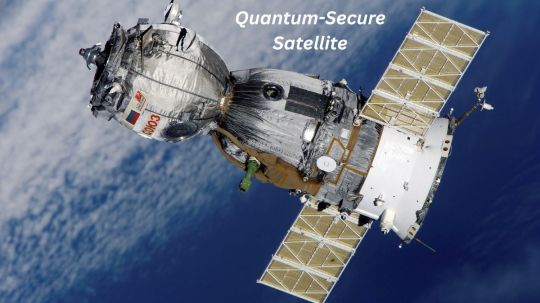
A Quantum-Safe Satellite
India is developing quantum-secure satellite technology to protect its space infrastructure from quantum computing threats. This project is driven by the knowledge that quantum computers can crack algorithms and decrypt existing encryption methods. The nation is safeguarding defence communications and other important resources in the quantum era.
According to Matt Swayne's July 8, 2025 news article, Indian corporations are building the nation's first quantum-secure satellite. Space TS, a space systems engineering firm, and Synergy Quantum, a post-quantum encryption specialist, are working on this project. They collaborate to create and execute safe space-based technology. India's “Atmanirbhar Bharat” program for technological independence drives the partnership's goal of creating the country's first domestic quantum-secure satellite and strengthening its space infrastructure against quantum threats.
Its main technology isPost-Quantum Cryptography (PQC). PQC uses mathematical methods that are immune to quantum attacks and can be run on current hardware, making it easier to scale across current and future space infrastructure than Quantum Key Distribution (QKD), which uses quantum physics to secure keys. Quantum-resistant encryption will be added to every stage of the space communication stack to safeguard systems against quantum computers that could break Shor's Algorithm.
The following advances are expected from this collaboration:
Encrypted satellite packets.
Satellite-to-earth communications are secure.
Self-governing mission control systems resist manipulation and interception.
Swarms of quantum-resilient satellites.
Safe ground stations.
Space drones with quantum security for speedy response.
AI-powered satellites can reroute data, shift orbits, and respond to abnormalities without ground station assistance.
Developing safe orbital transfer vehicle navigation systems.
Satellite network “tip-and-cue” coordination. Hardened mission control uses quantum-secure protocols.
Synergy Quantum handles encryption, embedded security, and secure communications protocols, while Space TS handles spacecraft architecture, mission planning, and system integration. Both companies will develop hardware and software simultaneously to ensure end-to-end protection rather than adding encryption to existing systems. Space TS founder and CEO Ashok Saxena underlined the need of quantum-protecting command channels, telemetry, uplinks, and downlinks for mission integrity and national security. Synergy Quantum founder and CEO Jay Oberai stressed the partnership's importance in bolstering India's space infrastructure with quantum-safe encryption and advanced authentication.
R Anil Kumar's July 7, 2025, news item describes India's rapid development of hacker-proof, quantum-safe space technologies for its military. This urgency is due to recent hacks and security concerns, especially the vulnerability of systems like the Indian Constellation navigation system (NavIC) to quantum computing threats, particularly from China. Chinese quantum computing discoveries have proved they can crack traditional encryption, making India's systems vulnerable to interception.
The National Quantum Mission (NQM) and Department of Space are developing a quantum-secure satellite network using QKD and PQC VPNs to address this. QKD, based on quantum entanglement, permits encryption key exchange with instant eavesdrop detection, unlike PQC, which employs quantum-resistant algorithms. Ajai Chowdhry, Chairman of the National Quantum Mission's Governing Board, said the migration to quantum-secure communication will be accelerated and stressed the need for Indian IP hardware chips to protect data.
Long-distance QKD networks on LEO and higher satellites are projected to be integrated by early August, and the first quantum satellite will be revealed within two to three months of July 7, 2025. Defence satellites will have PQC systems that can establish digital signatures for every location, eliminating the need for ground station authentication keys and reducing key compromise. NQM will need satellite providers like ISRO to transport gear. Indian private satellite enterprises are building quantum-safe networks.
The National Quantum Mission (NQM) in India received ₹6,003 crore in funding in April 2023 to create inter-city quantum networks and secure satellite communication across 2000 km. India will launch its first quantum communication satellite in 2026 to enable ultra-long-distance QKD, joining the elite group of countries with space-based quantum connectivity. With ISRO and DRDO having shown entanglement-based quantum-secure communications over shorter distances, India's strategy combines fiber-based, free-space, and satellite-based quantum communication.
Many nations, notably the US and EU, are developing quantum-secure satellite communications pilot systems and quantum-resistant algorithms. India is a new quantum technology challenger and is fast developing its capacity, although the US, China, and EU have more funding and experience.
China is the undisputed leader in quantum communication and launched the Micius quantum satellite in 2016.India is developing its first quantum satellite for 2026 to extend terrestrial quantum communications beyond 300 kilometres. India has several mathematicians and software developers for quantum algorithms, error correction, and theoretical quantum information science research. U.S.-India Quantum Coordination Mechanism cooperation advances it.
In conclusion
In response to quantum computing's risks, India's National Quantum Mission and private companies are rapidly developing quantum-secure satellite technology. By developing PQC-hardened satellite systems and QKD capabilities, India hopes to establish a sovereign space-security architecture, reduce dependence on foreign infrastructure, and gain a competitive edge in secure satellite services, defence communications, and secure drone operations in the quantum era.
#QuantumSecureSatellite#quantumcomputing#cybersecurity#PostQuantumCryptography#QuantumKeyDistribution#quantumalgorithms#News#Technews#Technology#Technologynews#Technologytrends#Govindhtech
0 notes
Text
ECDSA Quantum Computing and SHA-256 For Bitcoin Security
ECDSA Quantum Computing
Bitcoin Vulnerability and Google Quantum Advances Recent reports of Google's quantum factoring accomplishments have raised Bitcoin security concerns. Google researchers refined Shor's method and improved quantum decoherence error correction to reduce the number of qubits needed to break RSA-2048 from 20 million to one million. Despite this progress, the greatest quantum processor has just 1021 qubits, and more qubits make quantum coherence harder. In spite of claims of greater qubit counts, factoring tiny numbers like 35 has not improved.
Bitcoin's major security methods are SHA-256 and ECDSA. Shor's technique solves the discrete logarithm problem tenfold faster than classical computers, which could allow a quantum computer to extract a Bitcoin private key from a public key.
Google's recent discovery doesn't affect Bitcoin's “secp256k1” elliptic curve, although ECDSA is reportedly easier to breach than RSA. AI may help Shor's algorithm avoid ECDSA, according to Pauli Group founder. The Bitcoin curve's “secp32k1” may be cracked by 2027 and “secp256k1” by 2029, according to quantum computer pioneer IonQ. These forecasts should be taken “with a big grain of salt.”
A 2022 Deloitte analysis found that quantum attacks might affect 4 million Bitcoin, 25% of the supply. Older P2PK and P2PKH addresses that reveal public keys may be targeted by these attacks. Dormant wallets like Satoshi Nakamoto's are susceptible. Along with digital signatures, Grover's method may exploit Bitcoin's SHA-256 hash function, which might benefit quantum miners and lead to centralised mining power or a 51% attack.
Temporal and Mitigation Methods Due to hardware stability and error correction issues, experts expect quantum computers that could threaten encryption standards to appear in the 2030s, perhaps ten or more years away. The 13–300 million qubits needed to practically attack ECDSA are beyond contemporary quantum computers. However, enemies may capture encrypted data to decrypt it later.
The Bitcoin community is developing solutions:
Since 2016, NIST has standardised quantum-resistant algorithms for post-quantum cryptography (PQC). CRYSTALS-Dilithium, SPHINCS+, and FALCON, three digital signature competitors, may replace ECDSA. Quantum computers struggle with mathematical issues, which underlie them.
Hunter Beast proposed BIP-360, a “pragmatic first step” through a soft fork that would include additional UTXO types and addresses starting with “bc1r.” It advises adding post-quantum and ECDSA signatures to transactions so an ECDSA backup can be utilised if a post-quantum approach fails. Hunter Beast supports FALCON due to signature aggregation.
PQC Integration Challenges: PQC implementation isn't free. Larger signatures and keys will slow on-chain transaction throughput and signature creation and verification. FALCON signatures are 20 times larger than Schnorr and 13 times larger than ECDSA, whereas SPHINCS+ signatures can be 40 times larger, potentially resulting in 40 times fewer transactions per block.
The conceptual proposal BIP “Quantum-Resistant Address Migration Protocol” (QRAMP) by Agustin Cruz is also being explored. It would require a hard fork that erases bitcoins not migrated to post-quantum addresses. Like the Taproot upgrade, transitions will likely be voluntary migrations and soft forks. Satoshi Nakamoto's inactive address may cause heated debates.
Bitcoin developers may replace SHA-256 with a quantum-resistant hash algorithm to prevent a quantum-driven mining oligopoly. Theory suggests it's conceivable.
Bitcoin's Function and Social Impact Quantum risk affects banking, payments, communications, healthcare, and government networks that use RSA and ECC, not only Bitcoin. A “Q-Day” breach could damage trust and global finance. The 2023 EY Quantum Approach to Cybersecurity research suggests that quantum computers could crack current cryptography in five to thirty years by 50% to 70%. The US federal government mandates PQC by 2035.
Bitcoin's decentralised governance and $2 trillion market value motivate developers to construct quantum-resistant solutions that could set a standard for other industries. Texas A&M scientist Korok Ray says Bitcoin's open-source design and active developer community make it unique in its ability to react to quantum threats. BlackRock has listed quantum computing as a long-term risk in Bitcoin ETF filings.
#ECDSAQuantumComputing#ECDSA#BitcoinSecurity#EllipticCurveDigitalSignatureAlgorithm#PQC#Postquantumcryptography#technology#technews#technologynews#news#technologytrends#govindhtech
0 notes
Text
F5 Launches Post-Quantum Cryptography Tools & API Secu
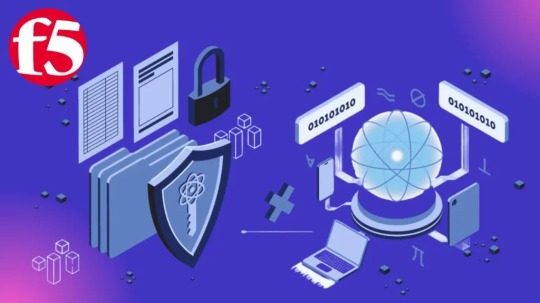
F5, a global leader in application and API delivery and security, announced the launch of comprehensive Post-Quantum Cryptography (PQC) ready solutions integrated into its Application Delivery and Security Platform. This strategic disclosure provides organisations with the tools they need to safeguard their apps and APIs from quantum computing dangers while preserving great speed and scalability. The effort addresses a major cybersecurity shift as the quantum era threatens conventional asymmetric encryption.
Quantum Imperative: Cybersecurity Growing Threat
Quantum computing will eliminate classical computer's limits, making it a turning point for cybersecurity. No one can overstate how urgent this change is. Quantum computing will make asymmetric cryptography unsafe by 2029 and breakable by 2034, according to Gartner. This looming vulnerability has led malicious actors to use a “harvest now, decrypt later” attack approach.
A cunning technique harvests encrypted data, including sensitive user, financial, personal health, intellectual property, and company records, with the purpose of decrypting them once quantum computing capabilities are generally available. This makes long-lived, essential data vulnerable if not safeguarded immediately.
Kunal Anand, F5 Chief Innovation Officer, says “post-quantum threats aren’t a distant problem; they’re a forcing function to modernise security now.” F5 emphasises its practicality by saying, “Our platform makes PQC adoption practical so enterprises can future-proof their apps, APIs, and trust models without slowing down”.
F5's Integrated Platform: Quantum Transition Simplified
F5 realises that PQC represents a fundamental cybersecurity architectural shift, hence it has devised solutions to simplify this complex process. F5 ADSP provides integrated and scalable application delivery and security. Through poorly managed transitions among hybrid, multicloud, and legacy systems, this platform-based strategy seeks to lower the risk of costly outages, application lags, compliance problems, and user annoyance.
Key F5 Features and Benefits
F5's comprehensive PQC preparedness solutions ensure security and ongoing operations:
Using NIST-standardized PQC algorithms and regular encryption methods, the platform provides trusted post-quantum encryption. This safeguards IP, customer data, and operational assets without slowing system performance. Proactive threat mitigation improves data security, privacy, and compliance.
Full-spectrum PQC server-side and client-side encryption from F5 protects on-site, cloud, and edge apps and APIs. This comprehensive solution comprises proactive threat intelligence, high-availability application delivery, encrypted threat protection, access security, and high-performance firewalls. According to insiders, guarding merely the client or server is insufficient because quantum threats could still affect data.
Consistent Operations and Crypto-Transition: The solutions integrate legacy, multicloud, and hybrid environments smoothly, allowing gradual system updates without disrupting business. F5's proxy capabilities let organisations to shift to post-quantum protocols and hybrid cryptographic frameworks at their own pace. This solution simplifies quantum-safe cryptography transition by reducing complexity and downtime.
Visibility uniform Across settings: F5's platform centralises administration and visibility across settings using AI, telemetry, and automation. This provides complete views of applications, APIs, and encrypted interactions, improving threat detection during PQC migrations.
F5 safeguards important assets, consumer confidence, and compliance using NIST-approved algorithms and quantum-resistant encryption. Breaches and outdated cryptography cause legal, financial, and reputational concerns.
Next steps and availability
In addition to being a technological prerequisite, post-quantum cryptography allows enterprises to innovate now and prepare for the future. F5's tailored hybrid cryptographic model support helps businesses deploy applications efficiently while preparing for post-quantum protocols and cybersecurity changes.
F5 Application Delivery and Security Platform solutions support Post-Quantum Cryptography. PQC preparation solutions, blog insights, and in-depth studies like “The State of PQC on the Web” from F5 Labs may help businesses prepare for the quantum danger.
F5 is the industry leader in application and API provision and security. After 30 years, F5's Application Delivery and Security Platform (ADSP) is the industry's leading platform for delivering and securing any application or API, whether on-premises, in the cloud, at the edge, or in hybrid and multicloud environments. F5 invents and works with the world's biggest and most innovative firms to build fast, secure, and accessible digital experiences to improve the digital world.
#PostQuantumCryptography#APIs#F5#quantumthreats#quantumcomputing#multicloud#cybersecurity#News#Technews#Technology#Technologynews#Technologytrends#Govindhtech
0 notes
Text
Canada’s Harvest Now Decrypt Later & Post-Quantum Migration
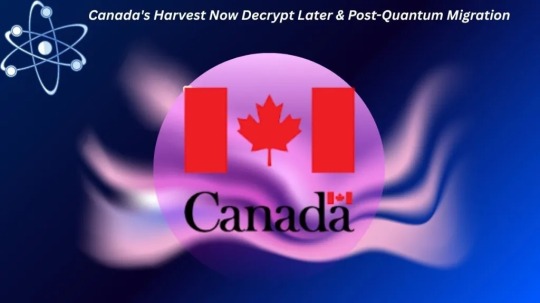
Canada Sets 2035 Quantum Cyber Defence Initiative Deadline
Canada accelerates its transition to post-quantum encryption standards in crucial sectors to combat Harvest Now Decrypt Later (HNDL).
Canada has announced a multi-year initiative to protect its government IT systems from quantum computers. All government IT systems that aren't classified as post-quantum cryptography (PQC) must be transformed by 2035, according to the initiative, which started on June 23, 2025. The government's dedication to safeguarding personal information from quantum technologies is demonstrated by this ambitious timeframe.
The Canadian Centre for Cyber Security's roadmap sets strict requirements for government agencies. Initial PQC migration plans and annual progress reports are expected April 2026. High-priority systems should be transferred by 2031, while all other systems should be upgraded by 2035. Cloud providers and in-house IT infrastructure are included.
Quantum Threat: “Harvest Now Decrypt Later”
Quantum computers could replace encryption, making this project vital. The plan opposes “harvest now, decrypt later”. Malicious actors may be amassing encrypted material now to decipher it when quantum computing is practical. Since they are vulnerable to HNDL, systems that protect data privacy over public networks are prioritised for migration.
PQC replaces vulnerable public-key cryptography for user authentication, communication security, and other essential functions to reduce this cryptographic risk. Standardised PQC algorithms are recommended by the Cyber Centre based on worldwide standards finalised by NIST.
A Comprehensive Government Approach with Clear Duties This complex, multi-year effort requires GC devotion and teamwork. Important parties include:
The Communications Security Establishment's Canadian Centre for Cyber Security (Cyber Centre), Canada's IT security authority, provides technical guidance, oversight, and compliance monitoring throughout the multi-phase process. They will also update network protocol setup instructions and a shared resource repository.
Treasury Board Secretariat (TBS) provides strategic direction, policy leadership, and government-wide security management. TBS will release policy tools to compel progress reporting and departmental PQC migration strategies.
Shared Services Canada (SSC) develops its PQC migration strategy and advises TBS and the Cyber Centre on its viability while administering IT services and infrastructure for many departments.
Federal departments and agencies: Each agency handles cybersecurity issues within its program area. They must establish and implement tailored PQC migration plans for their systems, including contractual cloud services.
Phased Execution for Smooth Transition
The roadmap's three PQC migration phases should overlap:
Prepare: Departments must prepare a PQC migration plan. This requires a cross-functional committee, a PQC Migration Technical Lead for coordination, and a PQC Migration Executive Lead (typically the Designated Official for Cyber Security or a delegated executive official) for oversight and accountability.
This phase includes financial planning to decrease costs using IT equipment lifecycles and modernisation strategies. This is because delays can lead to rushed purchases and higher costs. An education plan is needed to inform employees about the quantum threat and migration status. Procurement legislation must be amended to ensure new systems meet PQC, cryptographic agility, and Cyber Centre-recommended contract conditions and certification criteria.
Identification: This key process involves a thorough audit to find all cryptography usage across IT systems. The scope includes network services, operating systems, applications, and physical assets including server racks, laptops, printers, and smart cards. We want to create a complete inventory of system components, vendors, security measures, configurations, dependencies, and accountable contacts.
Departments must prioritise “harvest now, decrypt later” systems. Discovery will employ existing ITSM procedures and software tools, such as network monitoring, EDR, and SIEM solutions. The Cyber Center's sensors program should aid this identification. To understand vendor PQC roadmaps and product compatibility, engage vendors early.
Implement system replacements, updates, secure tunnelling, or network isolation based on inventories. Impact assessments, rollback playbooks, testing staging environments, and post-transition monitoring should be part of IT transition plans. Though the initial range of PQC-capable devices is minimal, providers are increasingly adopting new standards. The change may require backward compatibility and a second phase to disable outdated, vulnerable encryption. Legacy systems that cannot be retrofitted may need complete replacement or network isolation or secure tunnelling.
Governance and Support
The Cyber Centre, SSC, and TBS form the IT Security Tripartite, which governs the effort. It oversees compliance and advises. The Canadian Government's Enterprise Architecture Review Board (GC EARB) will ensure new systems meet cybersecurity and digital service standards. Progress reports will be included in government digital services planning to ensure transparency and help agencies adjust timetables and resources.
Interdepartmental Quantum Science and Technology (S&T) Coordination Committees oversee this pathway, which supports Canada's National Quantum Strategy. The Cyber Centre will advise and steer using the TBS GCxchange platform for resource exchange and the Learning Hub for quantum threat education.
Interdepartmental Quantum Science and Technology (S&T) Coordination Committees oversee this pathway, which supports Canada's National Quantum Strategy. The Cyber Centre will advise and steer using the TBS GCxchange platform for resource exchange and the Learning Hub for quantum threat education.
#HarvestNowDecryptLater#postquantumcryptography#CyberSecurity#PQCalgorithms#CyberCentre#News#Technews#Technology#TechnologyNews#Technologytrends#Govindhtech
0 notes
Text
Quantum Computing vs Crypto: Is Your Digital Wallet at Risk?
youtube
Imagine waking up to news that your Bitcoin wallet could be emptied in seconds. This isn't sci-fi; it's the very real and looming threat of quantum computing colliding with blockchain technology. In this essential episode from Tech AI Vision, we dive deep into the critical question: Can crypto truly survive the quantum threat? We explore how powerful quantum computers, with their qubits, superposition, and entanglement, are rapidly advancing to compromise the complex cryptographic codes that protect your Bitcoin, Ethereum, and other digital assets. You'll learn about key algorithms like Shor's, which targets public key encryption, and Grover's, which affects hash functions – both vital to blockchain security. Discover the unsettling "Harvest Now, Decrypt Later" threat and what it means for your investments today. We'll also cover the crucial developments in post-quantum cryptography and what proactive steps every crypto owner, investor, and developer needs to take right now to protect their digital future. Quantum computing and cryptocurrency are no longer just future concepts; they are current realities. Don't miss this definitive guide to understanding and preparing for the quantum computing crypto crash. Stay updated, stay safe, and help build a stronger future for blockchain in this new era.
#QuantumComputing#Crypto#Blockchain#QuantumThreat#Bitcoin#Ethereum#DigitalWallet#CryptoSecurity#Cybersecurity#TechAI#FutureTech#Encryption#PostQuantumCrypto#DigitalAssets#TechTrends#CryptoNews#AI#TechnologyExplained#BlockchainSecurity#PostQuantumCryptography#ShorsAlgorithm#GroversAlgorithm#CryptoThreat#FutureOfCrypto#QuantumVSCrypto#TechNews#DecentralizedFinance#Youtube
0 notes
Text
SEALSQ Quantum & WISeSat launch Secure Satellite With PQC
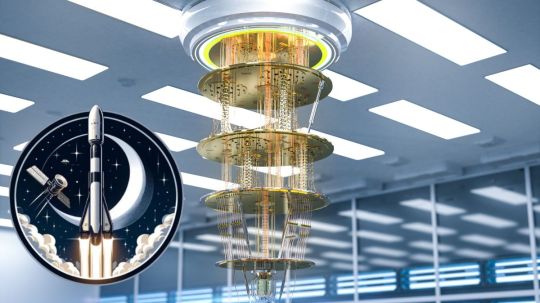
SEALSQ Quantum
Popular semiconductor andpost-quantum cryptography (PQC) business SEALSQ Corp. SEALSQ, a branch of WISeKey International Holding Ltd., develops and markets Post-Quantum hardware, software, semiconductors, and PKI. New quantum-resistant semiconductors and cryptography are the company's main goals. These solutions are designed to address the pressing security challenges caused by quantum computing's rapid development.
Quantum Threat and SEALSQ Response
While RSA and ECC provide digital security, powerful quantum computers are becoming more capable of exploiting them. Quantum computers' ability to tackle difficult mathematical problems threatens data integrity and privacy worldwide, challenging these well-established encryption methods.
In response to this imminent quantum threat, SEALSQ is driving the development of Post-Quantum Semiconductors that protect private data for years. SEALSQ directly integrates post-quantum cryptography methods onto satellite technology. This innovative method separates cryptographic activities from critical systems, boosting security and lowering vulnerabilities.
Satellite-ground station data transfer requires secure key creation, distribution, and administration, which this design simplifies. The cryptographic algorithms tested on these satellites meet the newest US National Institute of criteria and Technology (NIST) criteria for global interoperability and compliance with new security legislation.
SEALSQ's quantum-resistant solutions target several critical sectors and applications, including:
Multi-factor authentication tokens.
Intelligent energy systems.
Healthcare and medicine systems.
Defence.
IT network infrastructure.
Cars.
Industrial Automation and Control.
SEALSQ's semiconductor products use Post-Quantum Cryptography to secure important systems and boost resilience across industries against quantum attacks.
Satellite Launch Updates and Innovations
SpaceX and WISeSat AG partnerships make SEALSQ a quantum-resilient space security leader. In 2025, several projects accomplished milestones:
SEALSQ Corp, SpaceX, and WISeSat AG launched the first of six 2025 next-generation satellites on January 14, 2025. The Vandenberg Space Force Base in California launched this. These satellites provide scalable and secure machine-to-machine (M2M) connectivity with advanced post-quantum encryption and secure communication technologies. This project employs Satellite-as-a-Service to provide Internet of Things solutions for critical infrastructure, logistics, and precision agriculture without large infrastructure investments.
From Vandenberg, California, SpaceX's Falcon 9 Transporter-14 launched WISeSat 3, the latest satellite, on June 23, 2025. The newest rollout was crucial. Decentralised infrastructure and space-based cybersecurity have improved due to this effort. The first satellite with SEALSQ's Quantum RootKey was WISeSat 3.
DePIN from Orbit
In addition to secure communications, WISeSat 3 launches the first Decentralised Physical Infrastructure Network (DePIN) from orbit. This technology could change satellites' role in safe digital identity and decentralised finance. Modern technology developed with Hedera is integrated into the new satellite to enable SEALCOIN token exchanges from orbit. SEALCOIN AG, a WISeKey company, develops the decentralised physical internet using DePIN technology.
According to Carlos Moreira, founder and CEO of WISeKey (and SEALSQ), this launch is a significant step towards making space communications quantum-resilient and a milestone for decentralised infrastructure in space. PQC and blockchain-based tokenisation from orbit are altering space technology, cybersecurity, and finance. WISeKey Board Director David Fergusson said WISeSat's breakthrough PQC innovation set a bar for reliable data transport and communication.
Strategic Impact and Future Outlook
These satellite launches provide sovereign, secure, and scalable satellite services for digital identity, IoT, and reliable data transmission as part of the developing WISeSat constellation. This concerted endeavour is essential to Europe's space and cybersecurity capabilities, technical independence, and quantum computing leadership. SEALSQ and its partners are using PQC and DePIN from space to establish a quantum-resistant security infrastructure in orbit. Decentralised apps that can run from space will benefit from secure data transport.
#SEALSQQuantum#postquantumcryptography#PostQuantumSemiconductors#quantumthreat#WISeSatAG#cybersecurity#WISeKey#News#Technews#Technology#TechnologyNews#Technologytrends#Govindhtech
0 notes
Text
Quantum Communications 2025:New Inflexible Encryption
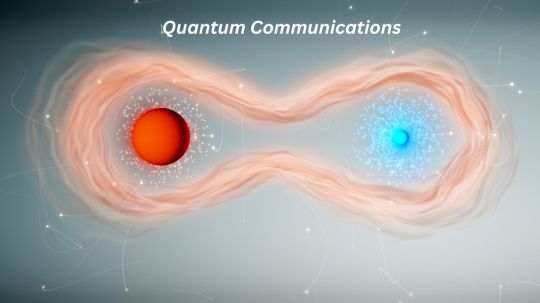
Quantum communication (QComm) uses quantum physics to safely transmit data and is growing fast. It will reach a critical point by 2025, enabling unbreakable encryption and rapid data transport. Because of its potential for groundbreaking discoveries or technological and infrastructure obstacles that could hinder its widespread adoption, this new issue is drawing major technology businesses, governments, and academic institutions.
Knowing Quantum Communication
QComm data is protected by entanglement, superposition, and quantum teleportation. Instead of computer bits, quantum communication uses qubits, small particles like photons, electrons, protons, and ions. When measured, a qubit “collapses” into 0 or 1.
One particle's state instantly impacts others regardless of distance due to quantum entanglement. Quantum state teleportation uses entangled qubits to convey information instantly, using the Einstein-Podolsky-Rosen (EPR) Paradox.
The most important QComm features are PQC and QKD.
QKD secures data and key exchange. Quantum Key Distribution sends encrypted classical bits and qubits via satellites or fiber-optic connections. When Alice and Bob exchange qubits to produce a shared random bit string, an eavesdropper (Eve) can identify flaws when measuring or intercepting qubits. The quantum physics no-cloning theorem and Heisenberg uncertainty principle state that it is impossible to replicate or measure a quantum state without changing it, making this detection possible.
Alice and Bob can start a new key creation if they suspect tampering and destroy the key if the Quantum Bit Error Rate (QBER) exceeds a threshold. E91 and BB84 are popular QKD protocols. QKD is more secure than standard encryption, however side-channel attacks and source authentication still exist. QKD is quantum communication's “first generation”.
Post-Quantum Cryptography (PQC): QRC techniques protect against large-scale Quantum Computing. Peter Shor's 1994 approach might crack most encryption protocols, including Rivest-Shamir-Adleman (RSA), in seconds on quantum computers. Lattice cryptography is often used to create PQC algorithms, which are based on mathematical problems that quantum computers may struggle with. QKD is hardware-dependent and long-term, while Post-Quantum Cryptography is software-based and short-term.
Problems and Obstacles
Despite these advances, quantum communication still faces severe barriers to popular application.
Scalability and Distance: Photon loss in fiber-optic cables limits transmission distance, however quantum repeaters are being developed to enhance range. Building a global quantum network requires expensive infrastructure.
Cost and Commercial Viability: QComm systems require complex and expensive hardware like photon detectors, dilution refrigerators, quantum repeaters, and quantum memories, most of which are currently in development with unpredictable supply chains. Over $1 billion USD is expected to be spent developing a quantum internet over 10 to 15 years. Quantum solutions are expensive, so organisations are hesitant to utilise them until costs drop and benefits become clear.
Quantum Decoherence and Error Correction: External factors impair quantum particles' information. The phenomenon called quantum decoherence. Despite quantum error correction research, effective error correction is still a long-term goal.
Governments struggle to reconcile innovation and national security as quantum encryption standards change frequently. Standards gaps hamper PQC-QKD interoperability. US, China, and EU export bans on quantum technology components for military application hamper international cooperation and information exchange.
Supply Chain Constraints: QComm hardware development requires rare and exotic raw materials like semiconductors, rare earth metals, and critical minerals, which are scarce and processed mostly in China.
skill shortfall: India is no exception to the worldwide quantum technology skill shortfall, which requires specific curricula and qualified professors. Developing a qualified workforce is challenging when career options are unknown.
Although PQC is transitory, its methods, which use current lattice encryption, may break over time. PQC algorithms use greater processing power, which may slow performance and make side-channel assaults harder to stop.
Future Hopes
Researchers predict quantum network development to accelerate through government, IT, and academic cooperation. To improve communication reliability, quantum teleportation, quantum error correction, and AI-driven quantum system optimisation are expected. Governments may also adopt clearer laws and international agreements to regulate cross-border quantum communication and encryption.
Healthcare, banking, and defence will use quantum communication as technology improves and becomes cheaper. Quantum communication will require consistent investment, strategic planning, transnational collaboration, and cunning geopolitical manoeuvring to overcome current obstacles and avert supply chain concerns. Quantum communication will show if it can overcome these obstacles or if it will still face obstacles before reaching its full potential in the next years.
#Quantumcommunication#Qubits#phenomenon#QuantumKeyDistribution#quantummechanics#QuantumBit#QuantumResistantCryptographic#PostQuantumCryptography#quantumnetwork#QComm#News#Technews#Technology#Technologynews#Technologytrends#Govindhtech
0 notes
Text
QNu Labs Launches QNu Academy to Lead India’s Digital Future
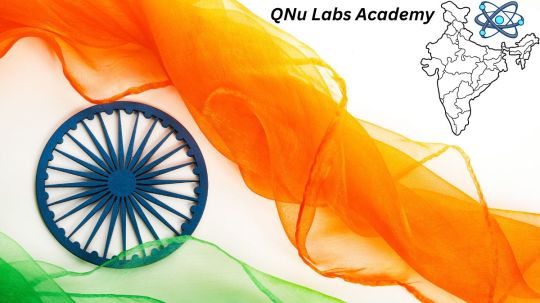
QNu Labs
QNu Labs Launches Global Quantum Cybersecurity Academy to Lead India's Digital Future
Bengaluru, June 23, 2025. Bengaluru-based quantum security startup QNu Labs created QNu Academy to teach quantum cybersecurity specialists worldwide. This crucial initiative supports India's National Quantum Mission to lead globally in digital infrastructure and quantum technology.
With quantum technology's rise, QNu Academy's founding corresponds with a data security tipping point. Experts warn that quantum systems may render encryption obsolete, leaving private data open to sophisticated cyberattacks unless encryption methods are improved. QNu Labs' QNu Academy fills the talent gap in this emerging industry and prepares professionals for this crucial transformation, according to the company.
A $170 billion industry by 2040 and one million quantum jobs by 2030 show that the global quantum revolution will demand a lot of new talent. Despite India's high engineering graduating rate, a huge skills deficit threatens progress. The NQM aims to produce a skilled workforce and make India a global leader in quantum, with a budget of ₹6,003.65 crore.
QNu Academy offers comprehensive and practical training in quantum-secure technologies for the Quantum Age. QRNG, PQC, and QKD will be its core curricular topics. QNu Academy emphasises industry-relevant experience above academic instruction.
Practical applications, industry mentorship, and access to cutting-edge physical and virtual labs with commercial-grade quantum technology make the curriculum hands-on. This exposes you to QNu Labs' flagship products, Tropos QRNG and Armos Quantum Key Distribution (QKD) .Most crucially, these are defense-grade technologies utilised by the Indian Navy, offering students unmatched access to complex, real-world systems.
Working professionals, academics, and college students fill the academy's talent pool with diverse experience. The programme, designed with the Indian Institutes of Technology (IITs), the Defence Research and Development Organisation (DRDO), and numerous global quantum research collaborators, combines instructor-led and self-directed study.
QNu Academy helps cybersecurity students find jobs with industry-validated certification programs, career training, and job placement support. Faculty Development Programs and help in developing Centres of Excellence (CoEs) in connected colleges and universities benefit higher education institutions. These CoEs are projected to be significant centres for innovation and research that will assist academic institutions become quantum education leaders in addition to attracting top students and obtaining research money.
National Quantum Self-Reliance and Digital Sovereignty Mission
QNu Labs co-founder and CEO Sunil Gupta said: “QNu Academy is more than just an educational platform. National goals include increasing quantum communications awareness and democratising quantum education. He added that the goal is to “create a sustainable ecosystem for quantum learning in India through industry-relevant programs, CoE labs, certified programs, real-time projects, and assignments with placement opportunities to develop quantum experts, empowering you to become a future leader.” This effort assures that India's cybersecurity future depends on training students for tomorrow's threats.
India's strategic goal of “quantum self-reliance” is tied to QNu Labs' declaration. QNu Academy strengthens India's commitment to developing its own cybersecurity tools and reducing its dependence on foreign tools by aligning with national strategic goals. Now that critical infrastructure operators and government agencies are assessing and mitigating quantum computer hazards, this initiative is crucial.
QNu Labs: India's Quantum Pioneer
Since its 2016 founding at IIT Madras Research Park, QNu Labs has helped India's quantum journey. The company put India on the quantum map with the 2018 launch of its QKD system. In 2022, the Army will build a 150-km QKD system with trusted nodes, and in 2024, the Indian Navy will receive 25 QKD systems, marking a quantum secure communication milestone in India. The Quantum Secure VPN from QNu Labs also secures Wi-Fi networks.
The startup developed Tropos (QRNG), a quantum-safe Quantum Random Number Generator used by the Indian Army for wireless solutions and DRDO and WESEE for critical applications. BEL, the Indian Navy, and a Middle Eastern client obtained its Armos (QKD) system. Indian Army recently placed a large order. Several clients also use QShield, a four-service quantum-secure web application platform.
QNu Labs raised ₹60 crore in May after completing its Series A investment round. NQM led this round alongside Lucky Investment, Speciale Invest, Tenacity Ventures, and Singularity AMC. This cash was used to grow QShield, the company's platform launched on World Quantum Day.
India needs QNu Academy for innovation and resilience. The academy may address the talent gap that could hamper national progress by stressing practical skills, industry-academia partnerships, and cutting-edge technologies. India, lead the quantum age and ready for cyberattacks.
#QNuLabs#QuantumCybersecurity#datasecurity#NationalQuantumMission#quantumcomputers#PostQuantumCryptography#News#Technews#Technology#Technologynews#Technologytrends#Govindhtech
0 notes